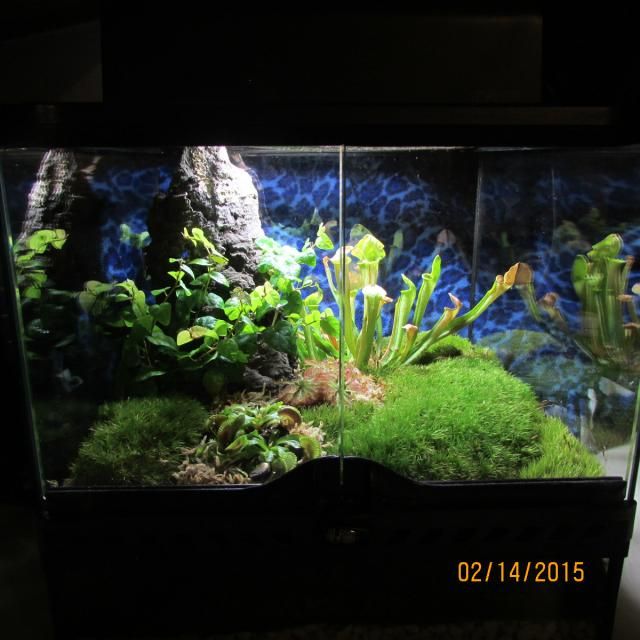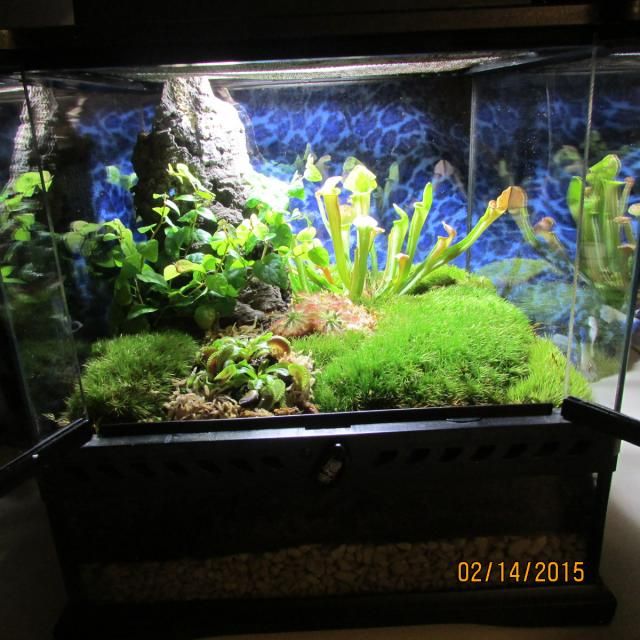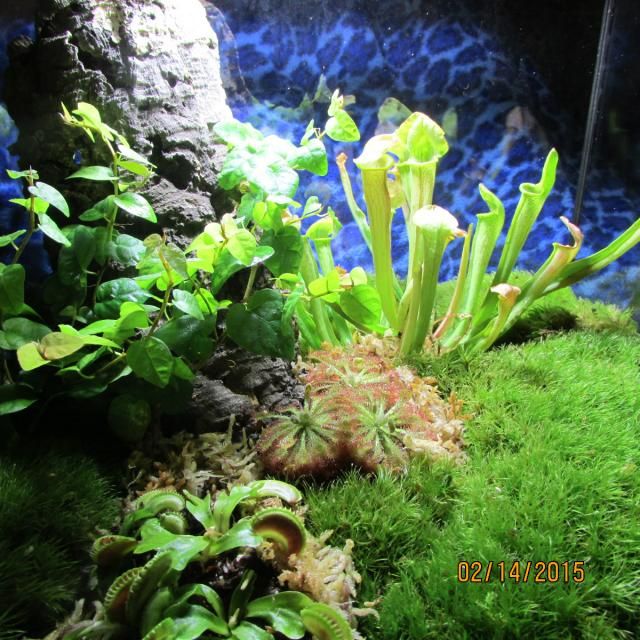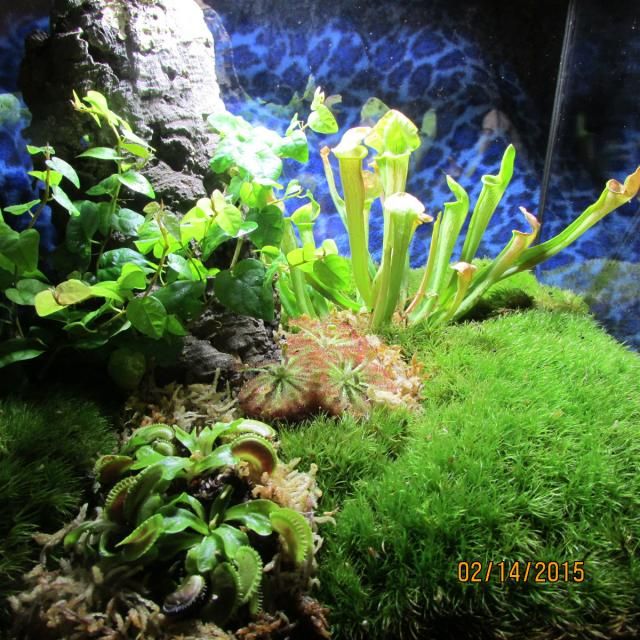this weekend... Hoping to meet other mantis addicts, but I had no luck... not one person there with mantis... BUT.... I did find something I really fell in love with and had to have... So I bought it!
So this was my Valentines gift to myself... Is it beautiful or what?




Last night I set it up in the living room... and It reminded me of having an aquarium... which I used to love to relax and wind down with in the evening... So as I was looking at it... I was wondering??? If I could add something alive (besides flies & bugs) to live in all that open space?
Do you think I could add a live mantis or other critter to live in that enclosure with those plants?
Without it's life being in danger? Has anyone done this?? successfully?
Any idea's would be great..
Also.. as I sat and let my mind ponder... the pitcher plant in there kind of looks like the flowers are browning... Is that normal?
Is there something I can feed it to green it up a little more? (natural fertilizers or supplements) or does it look healthy?
Any comments on the set up... I have had a fly trap years ago... but I have to re-study up on them... Any suggestions would be great.
Thank you for taking the time to look or chime in...
So this was my Valentines gift to myself... Is it beautiful or what?




Last night I set it up in the living room... and It reminded me of having an aquarium... which I used to love to relax and wind down with in the evening... So as I was looking at it... I was wondering??? If I could add something alive (besides flies & bugs) to live in all that open space?
Do you think I could add a live mantis or other critter to live in that enclosure with those plants?
Without it's life being in danger? Has anyone done this?? successfully?
Any idea's would be great..
Also.. as I sat and let my mind ponder... the pitcher plant in there kind of looks like the flowers are browning... Is that normal?
Is there something I can feed it to green it up a little more? (natural fertilizers or supplements) or does it look healthy?
Any comments on the set up... I have had a fly trap years ago... but I have to re-study up on them... Any suggestions would be great.
Thank you for taking the time to look or chime in...



